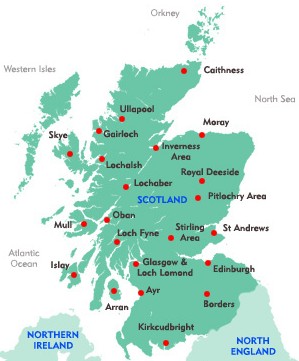
Schiehallion (Fairy Hill of the Caledonians)
“There was evidently a mythological mountain in the far north where the gods held their assembly”
The Mountain of Heredom
In the writings of the Chevalier de Berage, first published in 1747, on the origins of Freemasonry, he states: “Their Metropolitan Lodge is situated on the Mountain of Heredom where the first Lodge was held in Europe and which exists in all its splendour. The General Council is still held there and it is the seal of the Sovereign Grand Master in office. This mountain is situated between the West and North of Scotland.”

“There is a very remarkable cave near the south-west angle of Sith-chaillinn [Schiehallion], at the ‘Shealing,’ called Tom-
a-mhorair, or the Earl’s eminence. Some miles to the east, there is an opening in the face of a rock, which is believed to be the termination thereof. Several stories are told and believed by the credulous, relating to this cave; that the inside thereof is full of chambers or separate apartments, and that, as soon as a person advances a few yards, he comes to a door, which, the moment he enters, closes, as it opened, of its own accord, and prevents his returning.”
Schiehellion – Mount Zion in the far north
“The Sublime and Royal Chapter of the H. R. D. M. [Heredom] was first constituted on the Holy top of Mount Moriah in the Kingdom of Judea and afterwards re-established by King Robert the Bruce.”
There are disagreeing sides to the claim that Robert the Bruce, King of Scotland, had help from the disbanded Knights Templar. Most of the evidence points to the Battle of Bannockburn in 1314 in which Robert defeating the English led by the now inept King Edward II.
The Battle of Bannockburn, 1314, 23-24 June
The significance of this battle on a field near Stirling is undisputed: Scottish forces under King Robert I the Bruce defeated English King Edward II, in the pivotal event of the wars of Scottish independence. Exactly how the battle was won is not completely clear, since nobody wrote down a detailed account until much later.
There is a school of thought that says that the battle was turned at the crucial moment by a charge of the Knights Templar, who had taken refuge in Scotland after they had been expelled from France in 1307. As one version has it:
“The great King Robert the Bruce supported by the Knights Templar led by Sir William Sinclair with an army of only 9,000, defeated 38,000 Englishmen, the Scots facing heavy calvary, archers and wave upon wave of staunch and brave Englishmen.
On that day, it was the crushing charge of the Knights Templar across rocky and almost impassable ground that turned the tide of victory. That far off day, almost seven hundred years ago, they won for Scotland her independence.
Royal Chapter of Heredom
The apparent association of the Royal Chapter of Heredom with
Mount Moriah in Palestine may be pertinent when considering the Palestine based ancient Davidic tradition recorded in Psalm 48 which refers to
“Mount Zion in the far north,” particularly when bearing in mind the possible connection between Mount Moriah and Mount Schiehallion (Mount Heredom) in central Scotland.
The Masonic historian, George Oliver, in his work The Historical
Landmarks of Freemasonry, volume II, (Kessinger Publishing, 2003) states:
“The only high degree to which an early date can be safely assigned, is the royal order of H.R.D.M., founded by Robert Bruce. . .
The degree of H.R.D.M.
may not have been originally Masonic. It appears rather to have been connected with the ceremonies of the early Christians. These ceremonies
are believed to have been introduced by the Culdees”
This Celtic Culdee connection is further explained by Henry Corbin, in his address (delivered to the Eranos Conference in Ascona, Switzerland, in
1974) entitled The Imago Templi in Confrontation (1974) where he states:
“The primitive Celtic Church, prior to Romanization, is
represented by groups of monks known as Culdees….These autonomous groups of hermit brothers correspond to what we know of the original structure of the Celtic Church.
The Coli Dei are also included in the spiritual line of descent
from the builders of the Temple of Solomon, the line of
the Essenes, the Gnostics, even the Manichaeans and the
Ismailis. They were established at York in England, at Iona
in Scotland, in Wales, and in Ireland; their favorite symbol
was the dove, the feminine symbol of the Holy Spirit.
[Source: The Templar Papers
Ancient Mysteries, Secret Societies and the Holy Grail
by Oddvar Olsen, Karen Ralls, Robert Lomas]


